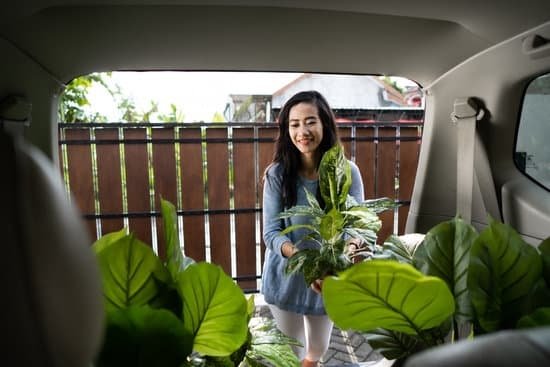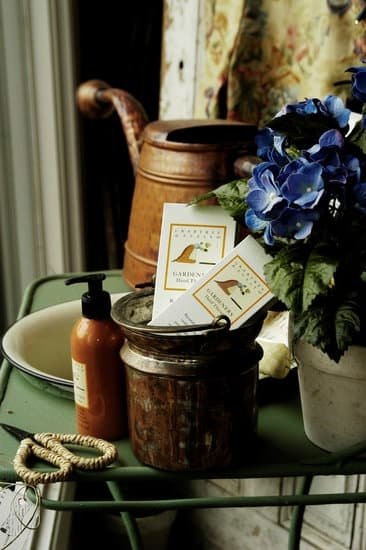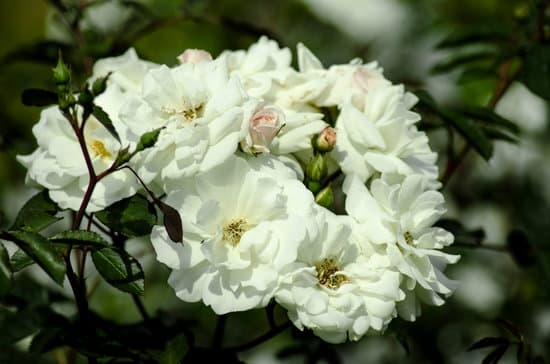Incorporating Traditional Indian Gardening Practices
Traditional Indian gardening practices have reused natural resources in a sustainable way for centuries. From utilizing rainwater storage to planting native trees and shrubs, traditional farmers have found ways to make maximum use of the resources available to them while ensuring that the soil is kept healthy and productive long-term.
Incorporating these traditional gardening techniques into modern gardening can be hugely beneficial. Rainwater harvesting, or the collecting and storage of rainfall, can help reduce water bills by providing an alternative source of irrigation. Planting native plants like flowering shrubs and trees in borders can help attract honeybees that are essential for pollination. Growing nutrient-rich beans, peas, millets, and other legumes boosts soil fertility as well as providing food for people by attracting beneficial insects that further aid in pollination.
These techniques not only create a more sustainable garden but can also save time, money, as well as reduce environmental waste. By using indigenous knowledge handed down from generation to generation, we can reconnect with our land and foster healthy relationships between people, plants, animals and their environment.
Utilizing Different Containers for Growing
Window boxes and balcony gardens provide limited but highly productive alternatives for gardening in smaller spaces. Window boxes, which can be hung on windowsills or mounted on brick walls, provide an aesthetic charm while providing an ideal locale for a mini-garden. Utilizing these containers can allow you to make the most of the limited space available sometimes when gardening in India.
When planting vegetables or flowers in a window box it is recommended to first fill the container with a wealth of compost, soil, peat and manure mix. When this mix is added, it should be firmly packed down so that there is no air pockets within the soil. This will allow the roots to have ample access to nutrients without being compacted and restraining plant growth. Next, begin filling your window box with small vegetation such as herbs or pansies that are not overly sensitive to harsh sunlight and temperatures before adding shrubs like dwarf shroubary or roses later on as these require more attention when setting up their root systems due to varying densities. Furthermore, if utilizing terra cotta pots for planting edible plants such as peppers or tomatoes, layer several inches of mulch before adding compost or manure mix; this will help reduce water evaporation from the pot soaks less often and prevents nutrients from leeching away too quickly over time while providing some insulation against drastic temperature changes.
Balcony gardens are also becoming increasingly popular spaces for gardening because they offer unrestricted interior home access (depending on installation) plus plenty of natural light – perfect conditions for houseplants! When starting out here too you want to ensure adequate drainage is installed which will save significantly on water bills plus increase organic matter within planters that hold larger vegetation since large amount of soil may otherwise create an unhealthy balance while retaining too much water. Once ready then start off by planting fragrant climbers such as honeysuckle plants around railings; this creates a wall of foliage along your balcony perimeter which adds privacy and shade for hot days ahead! Finally include sturdy grasses such as blue fescue too; this adds texture and color which allows your balcony garden project become a vivid haven where you’re able to roam freely back and forth without worrying about external elements like rain or animals snooping around.
Creative Use of Gardening Spaces
Vertical gardening is quickly becoming a popular way of making use of small or unusual garden spaces. This type of gardening can add beauty and dimension to outdoor areas, as well as minimize strain on ground space. Vertical gardens can be made out of many different materials, including wire mesh, terracotta planters, recycled objects — the possibilities are endless! However, it is important to research the suitable plants for your vertical area; some plants require more sun/shade than others which may not be accommodated in this growing method. Additionally, weight can become an issue depending on how your garden is built — you’ll need to consider the weight and balance created so that your supports remain strong. Speaking of support structures, you don’t have to break the bank with complicated construction pieces; something as simple as a trellis or lattice can create a great base for climbing plants such as vines or passion flower. Finally, making sure you keep plants watered regularly using drip or self-watering irrigation could help maximize output while minimizing effort! With thought and preparation vertical gardening can be beautiful and low maintenance – giving you more time spent enjoying your creation instead of maintaining it!
Introducing Regional Plant and Flower Species
When it comes to gardening in India, there is no shortage of regional plant and flower species to choose from. Plants native to the Indian subcontinent can thrive in a number of different conditions, allowing gardeners of all levels of expertise to create beautiful displays throughout the year.
When choosing plants and flowers to add to your Indian garden, it’s important to select species that are well-suited for the climate and environment of your particular region. Consider also that some plants may need more sun or water than others in order to thrive. For example, Ficus Benjamina is an evergreen plant that loves partial shade, while plenty of sun is essential for Hibiscus rosa-sinensis.
The soil you select for your gardens will also affect how well your plants grow in the Indian climate. Loamy soils with good drainage are ideal for most Indoor or outdoor gardens alike. Work with organic material like manure or compost when planting trees, shrubs and other perennial plants as this helps provide stability and allows for better absorption of moisture and air during dry periods.
Finally, taking care of your plants once you’ve planted them is key to keeping them healthy. Water regularly — but not too much — depending on each specific type’s needs and requirements; prune back dead branches and leaves; remove weeds regularly; mulch around trees and shrubs; apply fertilizer seasonally according to instructions; and consult with local nurseries if you have questions about specific species growing habits. With a little bit of effort on your part, you can create a memorable Indian garden full of vibrant blooms!
Exploring Ecological Benefits of Gardening
Gardening can have a positive impact on the local environment and surrounding ecosystem. Research has shown that having a garden in your residential area helps improve air quality and reduce noise pollution by creating natural barriers as well as increasing oxygen levels. Furthermore, gardens in urban areas can also help retain rain water in soil rather than it becoming runoff, which helps create healthier aquatic habitats downstream. Additionally, providing additional habitat for wildlife such as insects, birds, and small mammals adds to the biodiversity of your area and introduces many ecological benefits to those species like more food sources and shelter. Gardening also provides greater public health benefits due to its calming effect, which can improve mental health while teaching practical skills.
Therefore, when gardening it is important to make decisions that are both ecologically and socially Conscious. People often use synthetic fertilizers or pesticides while they are gardening that are proven to be harmful to the environment down the line. For example, look into organic products whenever possible, since these naturally-derived substances may cost more up-front but produce better long-term results without leaving any chemical after effects in your garden beds and surrounding ecosystems. To ensure you are caring for your space thoughtfully it is always recommended to research the best practices for caring for plants unique to your region and soil type and using local sources of composting material whenever possible. Lastly, if you choose to add irrigation systems make sure that these do not overly saturate your soil or introduce harmful materials directly into aquifers or water bodies near your area as this has been known to have devastating impacts on nearby ecosystems
Water Conservation Tips
Watering plants optimally can save money, time, and water all while keeping plants healthy. Prioritize watering the newest and most valuable plants first, then use a mix of short deep-watering sessions interspersed with periods of dryness to encourage drought resistance of existing plants. Trees especially will benefit from slow growth and hardiness if given the occasional chance to “dry out” between bursts of water.
For those who use an irrigation system, check for leaks frequently and keep track of weather forecasts so that sprinklers are activated only when needed. Consider investing in drip irrigation or soaker hoses to minimize water wastage and better target watering individual species. Regularly inspect soil for hydration levels rather than guessing how much water to apply each time – strive for just enough moisture without excess runoff or pooling. And make sure to share your garden’s bounty so family and friends can enjoy–and help conserve–the fruits of your labor!
Maximizing Current Landscape
Gardening in India can be an especially exciting way to improve the environment in and around your home or business. Creating beautiful gardens that also serve practical purposes and stage special occasions often requires some creativity and effort. One of the main ways to make this task easier is to look at the existing landscape elements that you have available—trees, flowers, shrubs, and other plants—and determine how they can be used to best enhance the design of your garden.
This means considering factors such as size restrictions, existing features, sun/shade requirements, water needs, fertility of soil, climate seasonal conditions and more when creating a plan for a successful garden. It’s also important to ensure proper spacing between plants. Keeping up on regular maintenance tasks such as weeding, pruning and providing proper nourishment is required for successful gardening in India. Additionally, combining various native species with exotic plants can add environmental benefits by fostering biodiversity in your landscape. Other tips for making the most out of current landscapes include investing in high quality soil nutrients; choosing drought-resistant varieties if needed; utilizing companion planting techniques; mulching to conserve moisture; promoting backyard composting; controlling pests naturally with beneficial insects relating attractive structures; incorporating built structures such as gazebos or pergolas that double as outdoor living spaces; using smart garden accessories like rain barrels or efficient irrigation systems; selecting materials made from sustainable sources with minimal impact on environment; and maintaining healthy water bodies by avoiding runoff into them wherever possible. With all these practices combined together one can maximize their current landscape while still having a beautiful setup that works best for their situation!

Welcome to my gardening blog! I am passionate about plants and enjoy sharing my knowledge and experiences with others. In this blog, I will write about everything related to gardening, from tips on how to get started to updates on my own garden projects.





